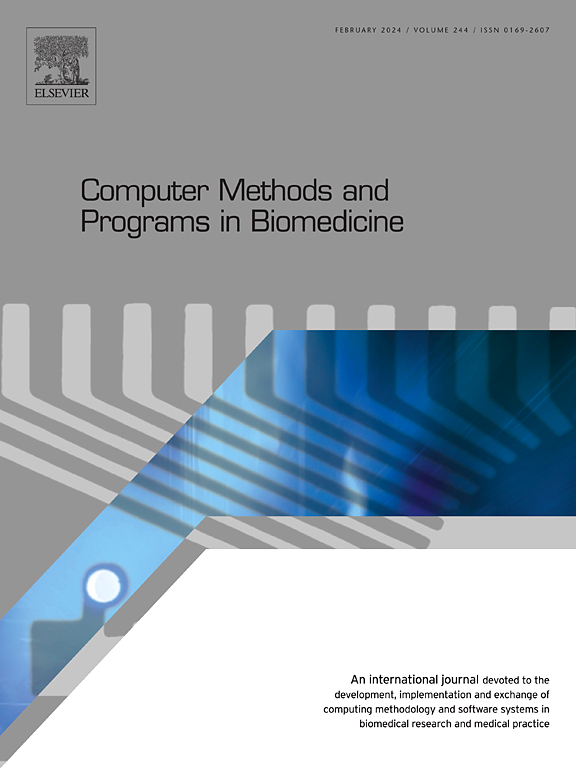生物医学数据自学习进化方法驱动的穷举双聚类
IF 4.8
2区 医学
Q1 COMPUTER SCIENCE, INTERDISCIPLINARY APPLICATIONS
引用次数: 0
摘要
背景与目的:双聚类是一种识别具有一致模式的亚基的关键数据分析技术,广泛应用于基因共表达分析等生物医学领域。尽管它很重要,但在进化算法的背景下,传统的部分表示在双聚类算法中面临着显著的局限性,例如冗余和对特定领域目标的有限适应性。本研究旨在通过引入一种新的生物医学数据进化双聚类框架MOEBA-BIO来克服这些挑战。方法:将MOEBA-BIO设计为基于进化元启发式方案的灵活框架。它包括一个基于上下文领域知识动态调整算法目标和参数的自配置器。该框架采用了一个完整的表示,能够集成新的特定领域目标和自主决定双聚类的数量,解决了传统表示的局限性。源代码可通过以下git存储库获得:https://github.com/AdrianSeguraOrtiz/MOEBA-BIO.Results:Experimental结果表明MOEBA-BIO克服了经典部分表示的局限性。此外,与其他最先进的技术相比,它在模拟和现实世界基因表达数据集上的应用突出了它专注于特定生物领域的能力,提高了双聚类的准确性和功能丰富性。结论:MOEBA-BIO代表了生物信息学中双聚类应用的重大进展。它的创新框架结合了适应性、自配置和领域特定目标的集成,解决了传统方法的主要局限性,并为复杂的生物医学数据集提供了强大的解决方案。本文章由计算机程序翻译,如有差异,请以英文原文为准。
Exhaustive biclustering driven by self-learning evolutionary approach for biomedical data
Background and Objective:
Biclustering is a key data analysis technique that identifies submatrices with coherent patterns, widely applied in biomedical fields such as gene co-expression analysis. Despite its importance, in the context of evolutionary algorithms, traditional partial representations in biclustering algorithms face significant limitations, such as redundancy and limited adaptability to domain-specific objectives. This study aims to overcome these challenges by introducing MOEBA-BIO, a new evolutionary biclustering framework for biomedical data.
Methods:
MOEBA-BIO is designed as a flexible framework based on the evolutionary metaheuristics scheme. It includes a self-configurator that dynamically adjusts the algorithm’s objectives and parameters based on contextual domain knowledge. The framework employs a complete representation, enabling the integration of new domain-specific objectives and the self-determination of the number of biclusters, addressing the limitations of traditional representations. The source code is available through the following git repository: https://github.com/AdrianSeguraOrtiz/MOEBA-BIO.
Results:
Experimental results demonstrate that MOEBA-BIO overcomes the limitations of classical partial representations. Furthermore, its application to simulated and real-world gene expression datasets highlights its ability to specialize in specific biological domains, improving accuracy and functional enrichment of biclusters compared to other state-of-the-art techniques.
Conclusions:
MOEBA-BIO represents a significant advancement in biclustering applied to bioinformatics. Its innovative framework, combining adaptability, self-configuration, and integration of domain-specific objectives, addresses the main limitations of traditional methods and offers robust solutions for complex biomedical datasets.
求助全文
通过发布文献求助,成功后即可免费获取论文全文。
去求助
来源期刊

Computer methods and programs in biomedicine
工程技术-工程:生物医学
CiteScore
12.30
自引率
6.60%
发文量
601
审稿时长
135 days
期刊介绍:
To encourage the development of formal computing methods, and their application in biomedical research and medical practice, by illustration of fundamental principles in biomedical informatics research; to stimulate basic research into application software design; to report the state of research of biomedical information processing projects; to report new computer methodologies applied in biomedical areas; the eventual distribution of demonstrable software to avoid duplication of effort; to provide a forum for discussion and improvement of existing software; to optimize contact between national organizations and regional user groups by promoting an international exchange of information on formal methods, standards and software in biomedicine.
Computer Methods and Programs in Biomedicine covers computing methodology and software systems derived from computing science for implementation in all aspects of biomedical research and medical practice. It is designed to serve: biochemists; biologists; geneticists; immunologists; neuroscientists; pharmacologists; toxicologists; clinicians; epidemiologists; psychiatrists; psychologists; cardiologists; chemists; (radio)physicists; computer scientists; programmers and systems analysts; biomedical, clinical, electrical and other engineers; teachers of medical informatics and users of educational software.
 求助内容:
求助内容: 应助结果提醒方式:
应助结果提醒方式:


